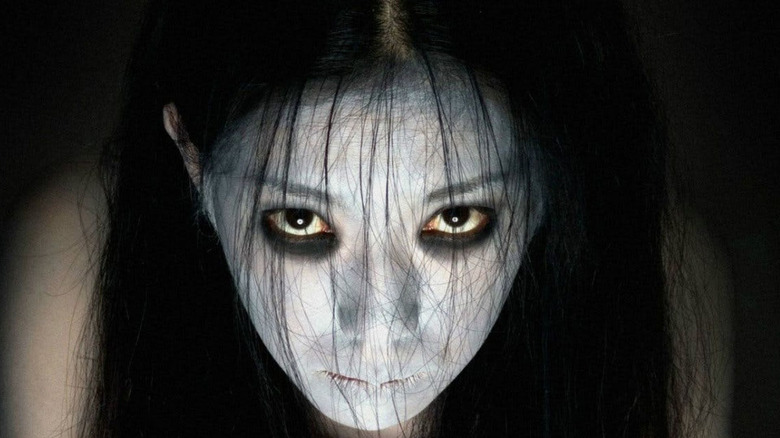
Japanese horror (or "J-horror") films are their own kind of scary. Whether they're about serial killers or angry ghosts, these films create a different type of fear, one steeped in existential dread about what it means to exist and the loneliness that is inherent to the human condition. It's a special brand of nihilism that's often accompanied by the absurd, creating horror that points at the absurdity of life itself. This tone is what makes these films so hard to adapt to a Western perspective. They are so explicitly Japanese that removing the cultural context in turn removes the horror. It's not just horrific imagery, but in a deeper psychological fear born from increasing loneliness in the age of technology.
This list aims to capture the incredible range of Japanese horror films, from ridiculous horror comedies to harrowing tales of ghostly viruses. It also aims to capture the extensive presence of horror in Japan, which is intrinsically linked to a complex folklore tradition involving spirits, monsters, and demons. You'll see some directors get multiple shout-outs -- horror greats like Takashi Miike and Sion Sono are not just masters of their craft, but they're also ridiculously prolific, and their influence on the genre cannot be limited to just one film. If you're new to Japanese horror, this is a perfect place to start your adventure into the wild and wonderful world of J-horror.
Tetsuo: The Iron Man
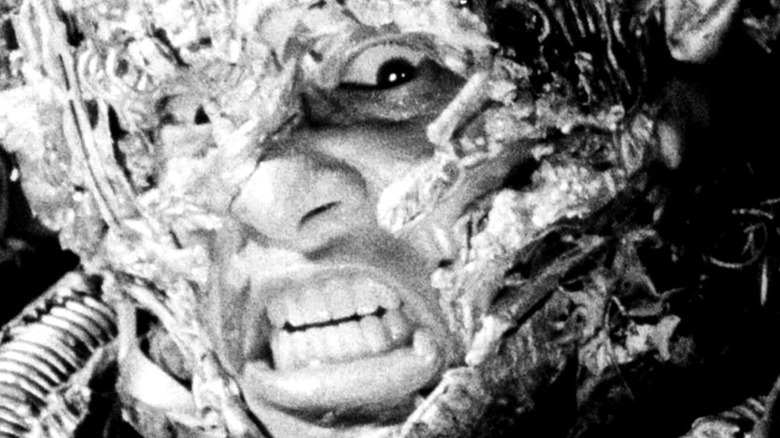
This is a film for the gore-lovers out there. This is also a film for those who are fans of high-concept horror that is less about a set narrative and more about creating a very specific atmosphere that sets your teeth on edge. Directed by Shinya Tsukamoto, "Tetsuo: The Iron Man" chronicles the life of a salaryman (Tomorowo Taguchi) whose thoughts are plagued with images of his body penetrated by scraps of metal. These horrifying thoughts ooze into real life as the man's reality melds with that of a metal fetishist, who loves to insert metal into his skin -- like, really loves it, to the point that maggots squirm in his infected flesh.
While "Tetsuo: The Iron Man" is shot in black and white, that does not make its graphic violence any less gruesome. Oozing blood resembles goopy oil as it gushes from open wounds, and human flesh becomes synonymous with machinery. But what's even more fascinating about "Tetsuo: The Iron Man" is that it is ultimately a love story between the salaryman and the metal fetishist, both of whom crave an unholy union between flesh and cold steel.
Kwaidan
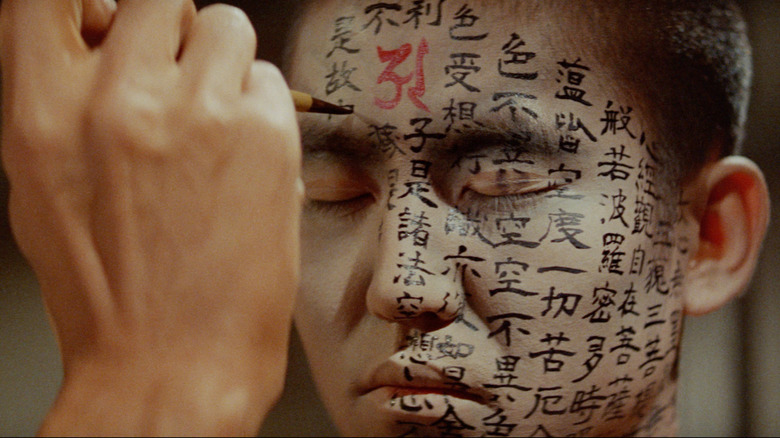
"Kwaidan," which translates to "ghost story," is a 1964 horror anthology film directed by Masaki Kobayashi, based on Lafcadio Hearn's collection of Japanese folktales. The first story, "The Black Hair," follows a poor samurai who regrets leaving his loyal wife for a wealthier, yet cold, woman in order to gain better social status.
The next is "The Woman of the Snow," in which two woodcutters seek refuge in a hut during a snowstorm. There, one of them is murdered by an angry spirit, who spares the other on the condition that he never tells anyone what he's seen. His resolve is tested when he meets a beautiful woman who resembles the spirit.
The third segment is a story-within-a-story called "Hoichi the Earless," about a blind musician named Hoichi attracts the attention of a rich family that may not be human. The last tale, "In a Cup of Tea," is a short and sweet segment about a man who keeps seeing faces in his tea. "Kwaidan" is a gorgeous dive into Japanese folklore and some of their traditional ghost stories that have been told -- and re-told -- for centuries.
Marebito
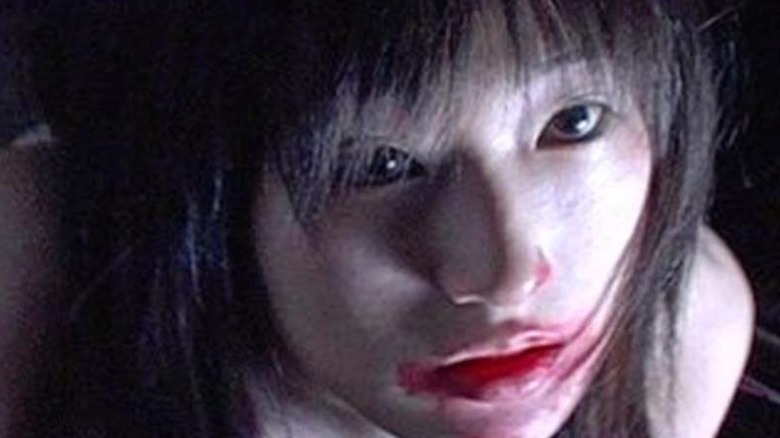
This won't be the only found footage film on this list. After directing the cult hit (now horror classic) "Ju-On: The Grudge," director Takashi Shimizu released "Marebito," a tale about a nervous man who becomes obsessed with filming the world around him after watching a man commit suicide. Through his camera, the man hopes to better understand death.
In his quest, the protagonist travels to a bizarre world underneath Tokyo, armed with nothing but his video camera. While venturing through this strange place, he encounters a young woman chained to a wall, who he decides to "save" and bring home to his apartment. But, as he spends more time with this woman, he realizes that she won't eat, drink, or even talk -- yes, we are wandering into vampire territory.
As he continues to care for the stranger, the man's life becomes more violent, and he realizes that he brought something to the surface that should have been left where it was found. "Marebito" takes a lot of cues from the works of H.P. Lovecraft, playing with the overwhelming madness intrinsic to cosmic horror.
Tag
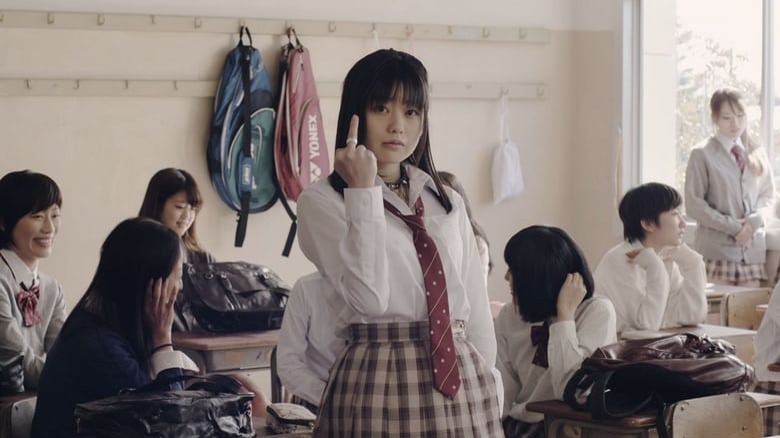
Sion Sono is a mad genius who doesn't let the pesky things like a "cohesive narrative" hold him back. In his 2015 film "Tag," student Mitsuki (Reina Triendl) is the sole survivor of a horrific accident, during which a gust of wind cuts her bus -- and her classmates -- in half. That introduction sets the scene for a truly ridiculous story that involves multiple dimensions, mistaken identities, machine gun-wielding teachers, and much more.
"Tag" is a film made for gore hounds looking for something absolutely gonzo, but also shockingly feminist. As Mitsuko travels through a bloody hellscape, watching all of her friends die right in front of her, Sono questions the objectification and use of the female body in exploitation horror. So, why exactly is it called "Tag?" Is it really all just one big game? You'll just have to watch to find out.
Onibaba
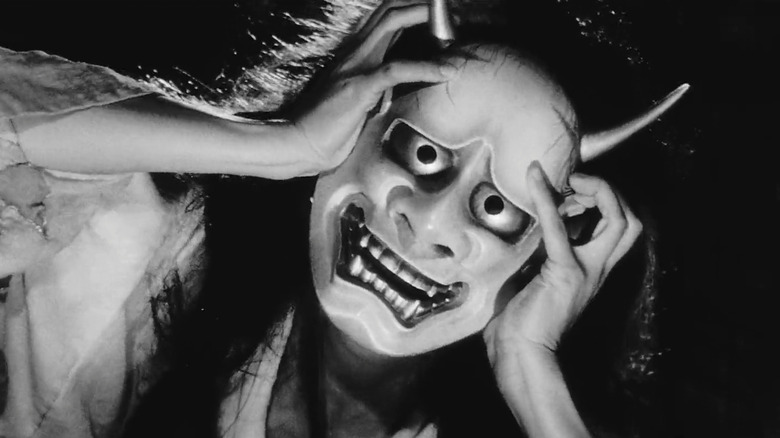
Kaneto Shindo's 1964 horror classic "Onibaba" is set in 14th-century Japan, where an old woman and her daughter-in-law are trying to survive during a civil war. As they await the return of their son-slash-husband, the women murder soldiers, loot their bodies, and sell the stolen goods so they can afford to survive. But when their neighbor returns from war, things get complicated, and a strange love triangle threatens the women's violent, yet simple, way of life.
Full of tension with a dash of the supernatural, "Onibaba" is an example of Japanese horror excellence, adapting classic Japanese folklore into something that both honors the past while also bringing it into the present. Shindo's early work set a precedent for the genre, and in turn helped shape the current roster of wild and wonderful Japanese horror filmmakers.
Suicide Club
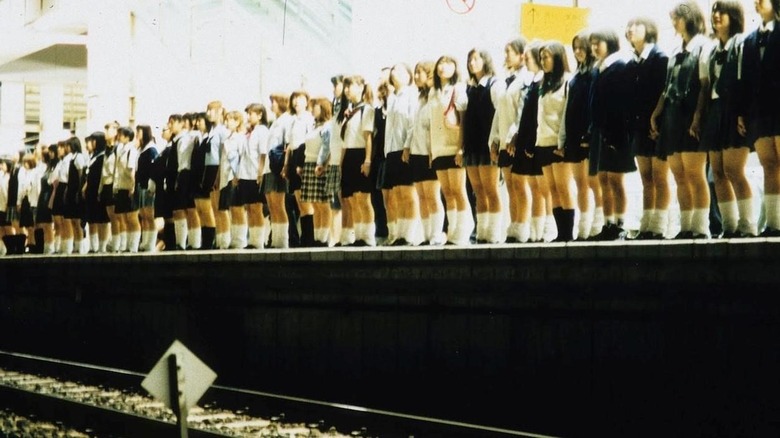
Sono makes an appearance on this list again, this time with his 2001 film "Suicide Club," which is about exactly that: a club where people commit suicide. The film opens with a large group of schoolgirls from across Tokyo, all of whom hold hands and jump together in front of a moving train. As bodies continue to pile up -- literally -- on the streets of Japan, Detective Kuroda (Ryō Ishibashi) tries to get to the bottom of what is causing these suicides. The answer lies in a complex series of clues that includes cryptic websites and special tattoos.
While the film grapples with serious subject matter, Sono isn't afraid to make the taboo darkly funny. This controversial film relies on a smattering of violent and absurd images, creating a cinematic experience that will keep you enthralled from beginning to end. Even with Sono's sinister playfulness, "Suicide Club" is ultimately a troubling and nihilistic film about the effects of the digital world on the younger generation, whose impressionable minds make easy targets for those with evil intentions.
Hausu
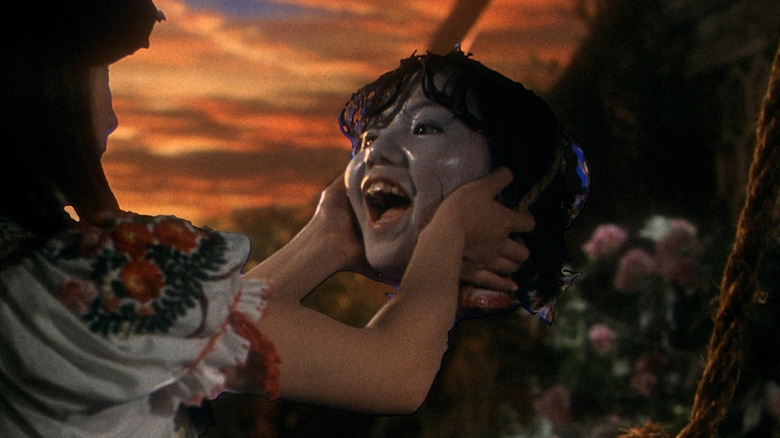
There is no way to truly capture the psychedelic essence of Nobuhiko Obayashi's 1997 wacky classic "Hausu," a film full of disembodied cats, breathtaking animation, and much, much more.
In "Hausu," a young woman named Gorgeous brings a group of her close friends to her aunt's house over the summer to relax in the countryside, but they don't know that this house is deeply haunted. Nothing but doom awaits them. "Hausu" is a film that knows exactly what it is, and Obayashi commits wholeheartedly. The result is a campy masterpiece that never pretends to be sleek; instead, "Hausu" leans into its outlandish nature, featuring poor special effects and wild animation sequences.
Of course, there's good reason for the ridiculousness: "Hausu" was written with the help of Obayashi's young daughter. It is, quite literally, from the mouth of a babe, and her honesty about what scared her as a child helps to create one of the strangest horror films to date.
Kuroneko
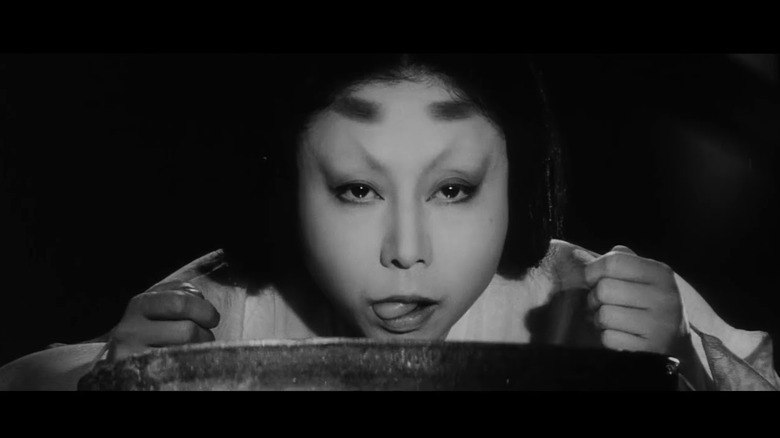
Shot in a beautiful monochromatic color palette, Kaneto Shindo's 1968 ghost story "Kuroneko" is a devastatingly gorgeous revenge tale about a woman and her daughter-in-law, who return as angry spirits after being raped and murdered by violent samurai during a war in feudal Japan. If that sounds similar, it's because Shindo wrote and directed "Onibaba" just four years earlier.
These two spirits, known as onryo, haunt a popular road, seducing lonely samurai and luring them away to murder them. They take the form of black cats as they pounce and yowl at their prey. Their feline forms also lend to some impressive aerial stunts from the two lead female performers. "Kuroneko" is a fascinating take on the rape-revenge tale; even in death, these two women must try to find justice for the harm inflicted upon them by those in power. While there is a lot of murder in the film, it contains almost no gore, instead relying on an oppressive and ominous atmosphere to create its unsettling tone.
Ju-On: The Grudge
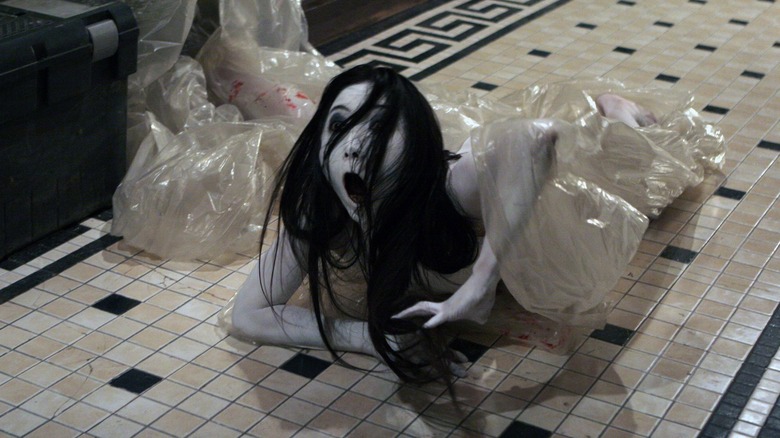
Released in 2002, Takashi Shimizu's "Ju-on: The Grudge" was the third film in a franchise, but the first to be released in theatres, and therefore the first of the films to really make a large mark on the horror genre. When a woman named Kayako and her son are murdered by her husband after he discovers her infidelity, they die with a grudge in their hearts. Their rage and anger spreads like an infection, and the two slowly torture and kill anyone who moves into their home.
The tradition of rage-filled ghosts who refuse to pass on peacefully is a traditional Japanese horror trope, particularly scorned women who seek revenge on the men who wronged them. "Ju-On: The Grudge" introduced many iconic horror images, as well as the unforgettable bone-chilling screech that emanates from a young boy's mouth as he descends on his next victim.
Shimizu later adapted "Ju-On: The Grudge" into an English-language film featuring a primarily white cast, but the original is a quintessential Japanese horror films that will haunt your dreams. It's impossible to forget the boy's death rattle, or the sound of Kayako creepily walking down the stairs as her joints creak and snap.
Ringu
"Ringu" is a classic Japanese horror film, and the one that made J-horror a mainstream concern internationally. Released in 1998 and directed by Hideo Nakata, "Ringu" is about a cursed videotape that kills whoever watches it after seven days. The contents of the tape are an amalgamation of unsettling images, culminating in a sequence in which a young girl climbs out of a well.
While investigating the tape, reporter Reiko Asakawa travels to the small island of Izu, looking to discover the tape's origin and the identity of the girl in the well; is it real, or is it an elaborate prank? During her investigation, those around Asakawa die violent deaths after watching the tape themselves. "Ringu" is the first film featuring the vengeful spirit Sadako, who has that long, wet, black hair draped over her face. This was also one of the first films to tackle Japan's growing digital landscape, and the horrors that lie in our increasing dependence on technology.
Audition
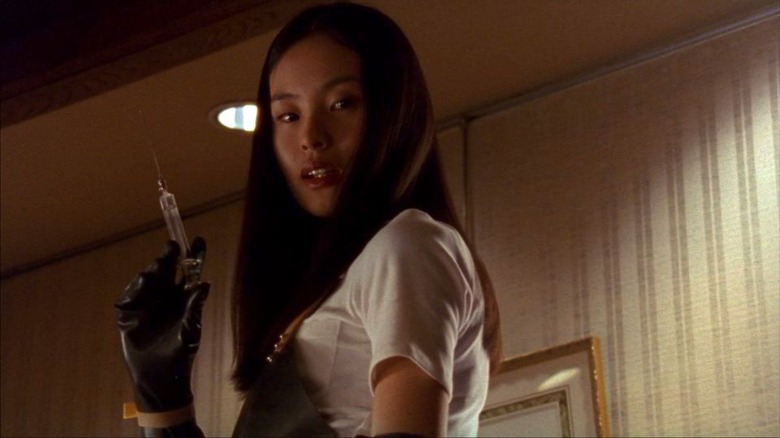
Takashi Miike paints with a bloody, gruesome brush, creating some of Japan's most extreme horror films, including "Visitor Q" and "Ichi the Killer." But perhaps his best work is his 1999 film "Audition," one of James Gunn's favorite horror movies, not to mention a distressing story about finding romance and the harmful misogyny of Japan's older generation.
Shigeharu Aoyama (Ryo Ishibashi) is a lonely film producer and widower who lives a quiet life. One day, his adult son suggests that Aoyama marry again. So, to help Aoyama find love, his friend Yasuhisa Yoshikawa holds auditions for a fake film role; in reality, the "part" is Aoyama's future wife.
During the process, Aoyama becomes enamored with the quiet and mysterious Asami (Eihi Shiina). As their relationship blossoms, he begins to discover dark secrets about her past -- dismembering abusers, copious amounts of piano wire, and bowls of vomit. While "Audition" starts as a slow-paced relationship drama, the film's final act is well worth the build-up -- it's one of the most shocking sequences ever committed to film. "Audition" also serves as the perfect introduction to Miike's work, illustrating his unique style of filmmaking as well as his uncanny ability to create disgusting and disquieting images.
Godzilla
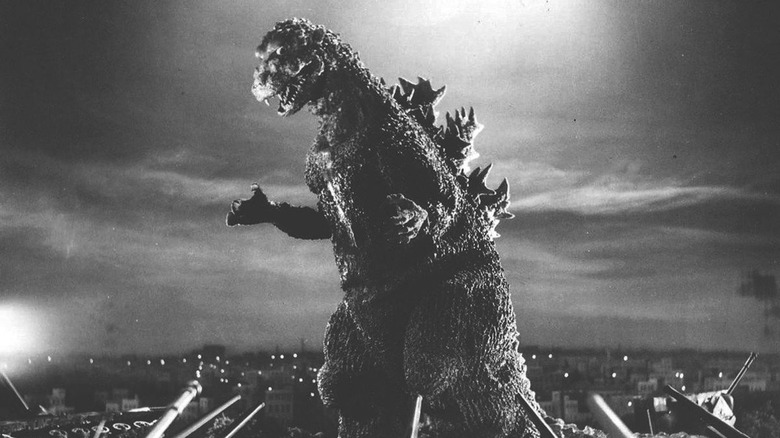
Kaiju movies are often thought of as campy spectacles with no actual fear factor. Cheap rubber costumes distract from the citywide destruction. Massive monster battles are the centerpieces, not the trauma inflicted upon millions of people. But the original kaiju movie, "Godzilla," which was directed by Ishiro Honda in 1954, is a terrifying monster movie that examines the horrors of nuclear war.
In his original iteration, Godzilla is an ancient creature awakened from his underwater slumber by atomic bomb testing in the Pacific Ocean. He now travels across Japan, leaving devastation in his wake. Not only is the city of Tokyo shown burned to the ground, but Honda also focuses on the individuals affected by Godzilla's destruction, depicting hospitals packed full of sobbing families and dying children. In this film, Godzilla is not the internet's thick-thighed boyfriend; he's a terrifying creature sent to wreak havoc on those who try to play God.
Pulse
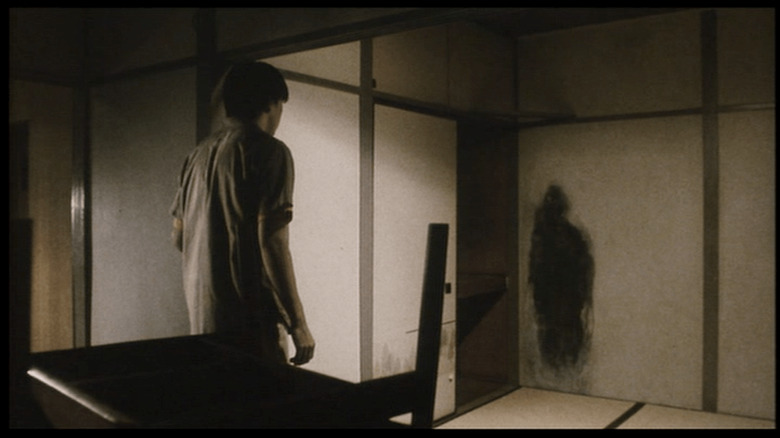
At the turn of the century, one of Japan's biggest fears was the increasing isolation that came with the growth of the internet. Kiyoshi Kurosawa encapsulates that cultural anxiety in his 2001 film "Pulse," which is about a ghostly virus that leaks from the internet into reality. In parallel story lines, two young women discover that something strange is happening to their friends, who begin committing suicide after leaving cryptic notes asking for help.
As their stories converge, the women discover that the spirit world has found a way to access and infect the real world through internet connections. It's like a computer virus, but one that also takes over the minds of real people. And, like any virus, the mysterious force begins to proliferate exponentially, claiming more and more lives every day. Kurosawa creates some very harrowing moments, including a scene with a slow-dancing ghost who is more menacing than any other cinematic spirit of recent memory.
Noroi: The Curse
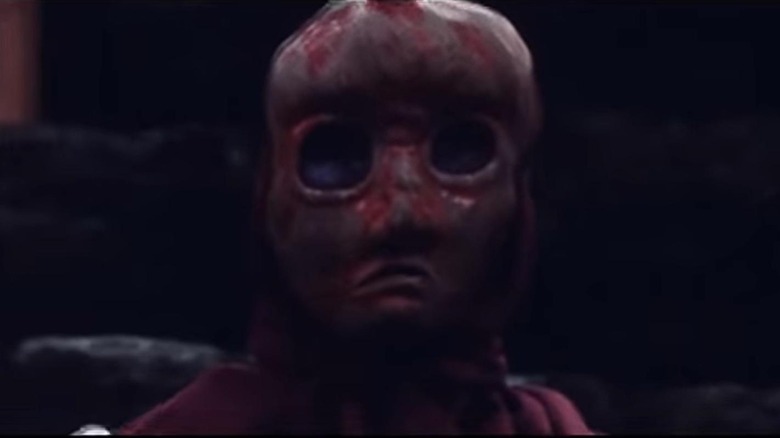
The found footage genre is horrifying, given its ability to place audiences in the shoes of terrorized characters by using a first-person point of view. But director Kōji Shiraishi takes it to another level with his 2005 film, "Noroi: The Curse." The film is presented as an incomplete documentary by paranormal researcher and journalist Masafumi Kobayashi (Jin Muraki), who is known for his books, documentaries, and TV series about ghostly events around Japan. In this documentary, Kobayashi begins investigating reports of disembodied sounds of babies crying, but the film quickly becomes about something much more sinister.
While "Noroi: The Curse" states from the very beginning that Kobayashi's house has burned down and that he's missing, this does not make any of Kobayashi's revelations any less terrifying, particularly in regard to some deeply unsettling imagery at the film's end. This is not the typical found footage film, full of shaky footage and haunted forests. This is a sleek pseudo-documentary that plays with the truth and how filmmakers build trust with the audience. "Noroi: The Curse" is not only a shining example of Japanese horror, but of the found footage genre as a whole.
Cure
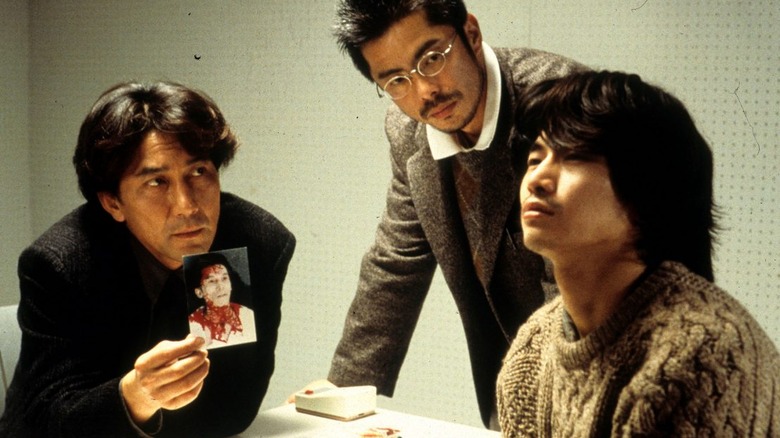
Kiyoshi Kurosawa is a master of psychological horror, creating stories that burrow under your skin and fester, haunting you for days. His 1997 film "Cure" -- one of "Parasite" director Bong-Joon Hoo's favorite movies -- is a prime example, capturing a deep-seated fear of losing control and the destruction that often comes with obsession. Kenichi Takabe (Kōji Yakusho) is a detective investigating a string of strange murders in which all of the victims are marked with a giant X, and yet were all killed by different people. Even weirder, the murderers have no memory of committing the crimes, and have no real motivation for the killings.
Takabe struggles to understand the mystery, until he captures Mamiya (Masato Hagiwara), who seems to have short-term memory loss. However, the detective slowly learns that Mamiya is a master of hypnotism, and that he is using those gifts to manipulate innocent people. "Cure" devolves into a tense game of cat and mouse, set against a drab, gray background that creates an oppressive atmosphere and smothers both the audience and the characters alike. "Cure" is a perfect example of Japanese horror, and how it easily and unsettlingly combines of disturbing imagery and existential dread.
Read this next: 8 Great Asian Horror Films That Hollywood Hasn't Remade
The post The 15 best Japanese horror movies of all time appeared first on /Film.
from /Film https://ift.tt/3uoS13l
via IFTTT
Comments
Post a Comment